2025’s Coworking Trends: Mid-Year Pulse Check On Earlier Predictions
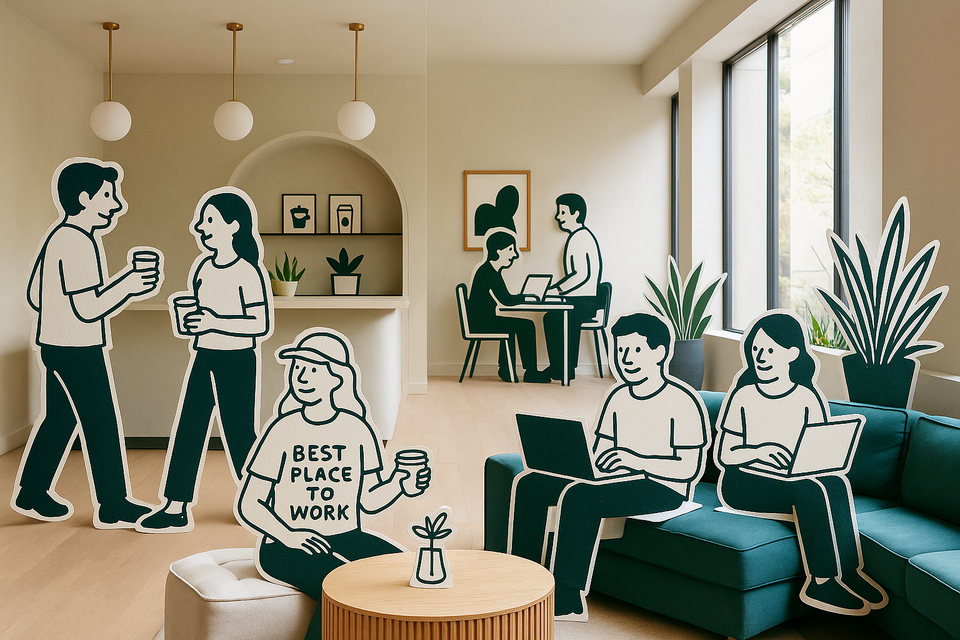
In January, we shared 8 trend predictions that could potentially shape the coworking world in 2025. Now, five months in, it's time for a pulse check. What’s unfolding as expected? What’s moving slower than anticipated? And where are we seeing pivots already?
We’ve rated each trend using a simple system:
🟢 = Confirmed & gaining ground
🟡 = Unfolding slower than expected
🔴 = Not playing out (yet) or facing resistance
Each trend also comes with further resources to dive deeper.
🟢 1. Economic Impacts, Flex Workspaces Become a Business Imperative
January Forecast
Rising inflation, escalating real estate costs, and geopolitical instability would force businesses to rethink long-term commitments and pivot toward agile, low-risk solutions.

Mid-Year Reality Check
What was once a forecast is now the blueprint. By mid-2025, the role of coworking has evolved from an optional perk to a strategic necessity. In an era defined by volatility, economic, geopolitical, and environmental disruptions, businesses are actively rethinking their real estate commitments.
The long-term lease is no longer the default. Instead, companies are opting for agile, CAPEX-light solutions that offer flexibility without compromise. Coworking has become the operating system for resilience, allowing firms to scale up or down, enter new markets, and manage risk with precision.
💡 Cost Control Is the New Growth
According to FTI Consulting’s 2025 CFO Survey, 63% of European finance leaders are focused squarely on cost-reduction strategies. Geopolitical instability (70%), energy volatility (66%), and inflation (64%) are cited as the most urgent external risks. Expansion has taken a back seat to financial defensibility.
🛑 Capital on Hold, Caution on High
Investor confidence has cooled. A recent Reuters report shows that 37% of investors across Europe have postponed, scaled back, or cancelled expansion plans, reshaping how commercial real estate is being used, leased, and monetized.
🌍 Eastern Europe Rises as a Strategic Alternative
As global supply chains are restructured, companies are nearshoring to markets like Poland, Hungary, and Romania. The Economist reports these countries are rapidly evolving into logistics and production hubs, not just because of location, but because of infrastructure that supports agile workspace deployment.
⚡ Flex Workspaces = Growth Without Risk
This new normal has triggered a decisive shift: businesses want presence without permanence. Coworking offers exactly that: local market entry without long-term leases, agility without overhead, and speed without sunk costs. For many, it’s the only viable growth path.
🟢 Trend Confirmed
Far from a temporary fix, coworking has emerged as a deliberate strategy for navigating uncertainty. With flexibility, speed, and financial control now top of mind, coworking has become less of a reaction and more of a recalibration.
📖 Further Reading
WSJ: Companies Delay Spending Amid Global Instability
Reuters: European Expansion Plans Paused
CFOs are dedicating the majority of their time to cost reduction strategies.
The Economist: Near-shoring Transforms Eastern Europe
🟡 2. Workforce Evolution, Hybrid Work Takes Diverging Paths
January Forecast:
Hybrid work has cemented itself as the global norm, with professionals working across cities and time zones. But the real question wasn’t if it would stick, it was how it would evolve.
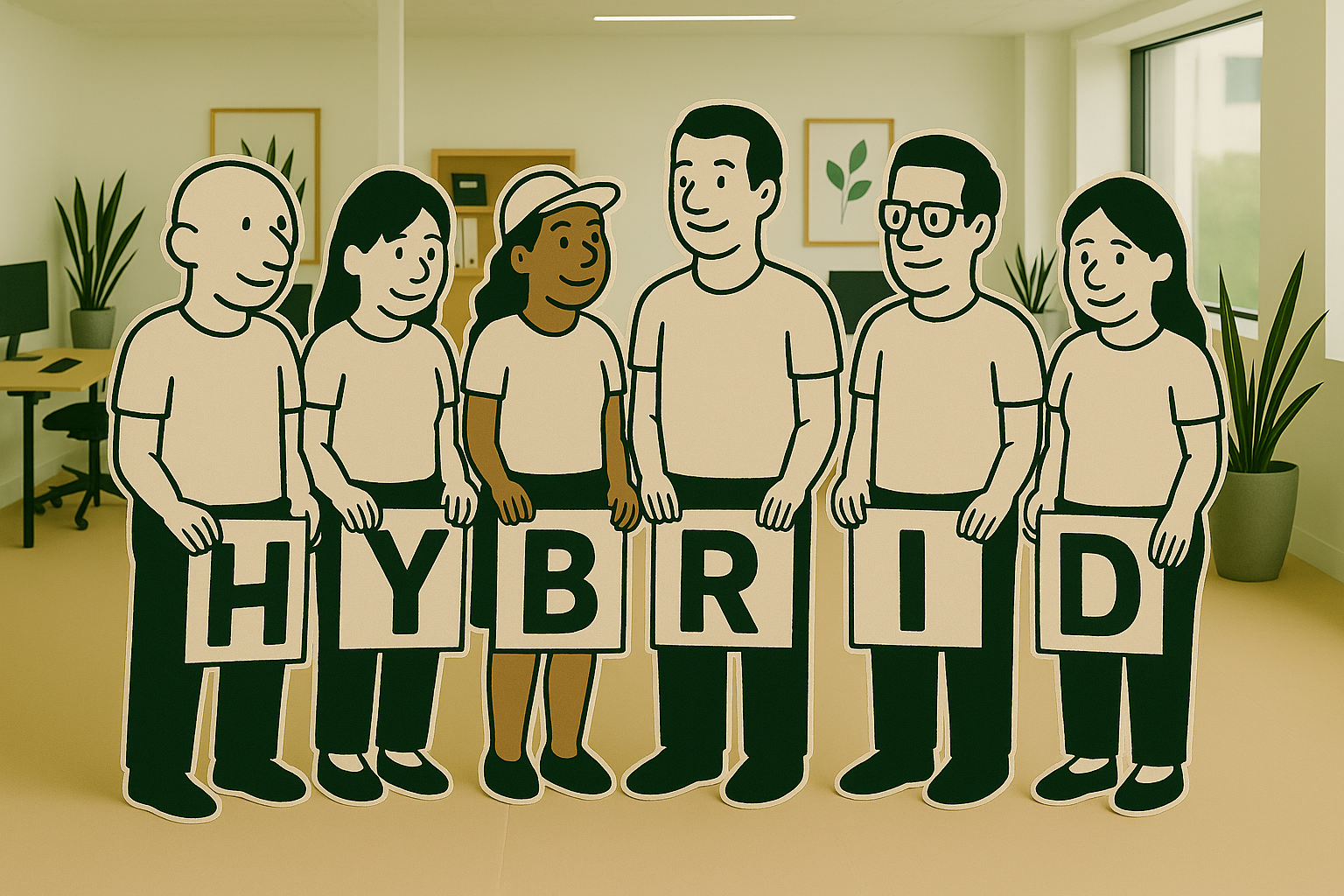
Mid-Year Reality Check
What began as an interim fix is now the working norm. Yet far from a one-size-fits-all model, 2025 has revealed just how fragmented the hybrid landscape has become.
Geography, generation, and job function now dictate distinct rhythms of presence and performance. The result? A nuanced patchwork of behaviors that’s reshaping what hybrid work looks like on the ground, from Tokyo to Toronto, interns to executives.
🌍 Hybrid Goes Global but Unevenly
Hybrid has become the dominant framework for modern work. According to JLL, 55% of office-based employees globally now follow a hybrid model, and 77% of CRE leaders say it's here to stay. But beneath that headline lies a fractured picture:
➡️ In the UK, workers average two days per week in the office, preferring even less (1.5).
➡️ In contrast, in China, the average is 4+ days, more than employees want, driven by cultural and managerial norms.
This isn’t one hybrid model, it’s a dozen different flavors of it, shaped by local policy, culture, and leadership style.
🧭 Flexibility Is No Longer Optional
Workplace flexibility has become a litmus test for talent retention. The latest WTW survey reveals that 53% of remote-capable employees would consider quitting if forced into a full-time office return. Even more telling: 48% of hybrid and remote workers are willing to take an 8% pay cut to preserve their autonomy.
Gallup’s 2025 State of the Global Workplace report adds another layer: only 21% of employees strongly agree their organization cares about their overall well-being, a record low. That emotional disconnect is fueling disengagement and resistance to rigid mandates.
In 2025, flexibility isn't just logistical, it’s emotional. And companies that overlook that human need are bleeding talent.
🧑💼 Gen Z Is Rewriting the Office Playbook
Surprisingly, it’s not older workers driving office returns, it’s Gen Z. JLL’s research shows that employees under 24 are averaging 3.1 days/week in the office, outpacing all other generations. Their reasons? Mentorship, structure, and community, not free coffee. Operators who recognize this shift are designing spaces with built-in social and learning environments that attract the next wave of professionals.
🟡 Trend Evolving
There’s no single blueprint for hybrid work in 2025. What’s emerging instead is a mosaic, shaped by geography, role, and generational expectation. For coworking operators and workplace strategists, the opportunity lies in precision: adapting to local rhythms, designing for nuance, and positioning flexibility as a mark of intelligence, not indecision.
📖 Further Reading
JLL: Real Estate Technology in the Hybrid Age
JLL: Office workers worldwide tend to be in only about half the time
WTW: Where Will Return-to-Office Mandates Land in 2025?
Gallup: Hybrid Work Indicator – 2025 Update
JLL: Gen Z’s Lead Return-to-Office Trend
🟢 3. Automation, From Back Office Chore to Competitive Advantage
January Forecast
In 2025, automation would no longer be a bonus it would become mission-critical for coworking operators to remain efficient, scalable, and responsive.
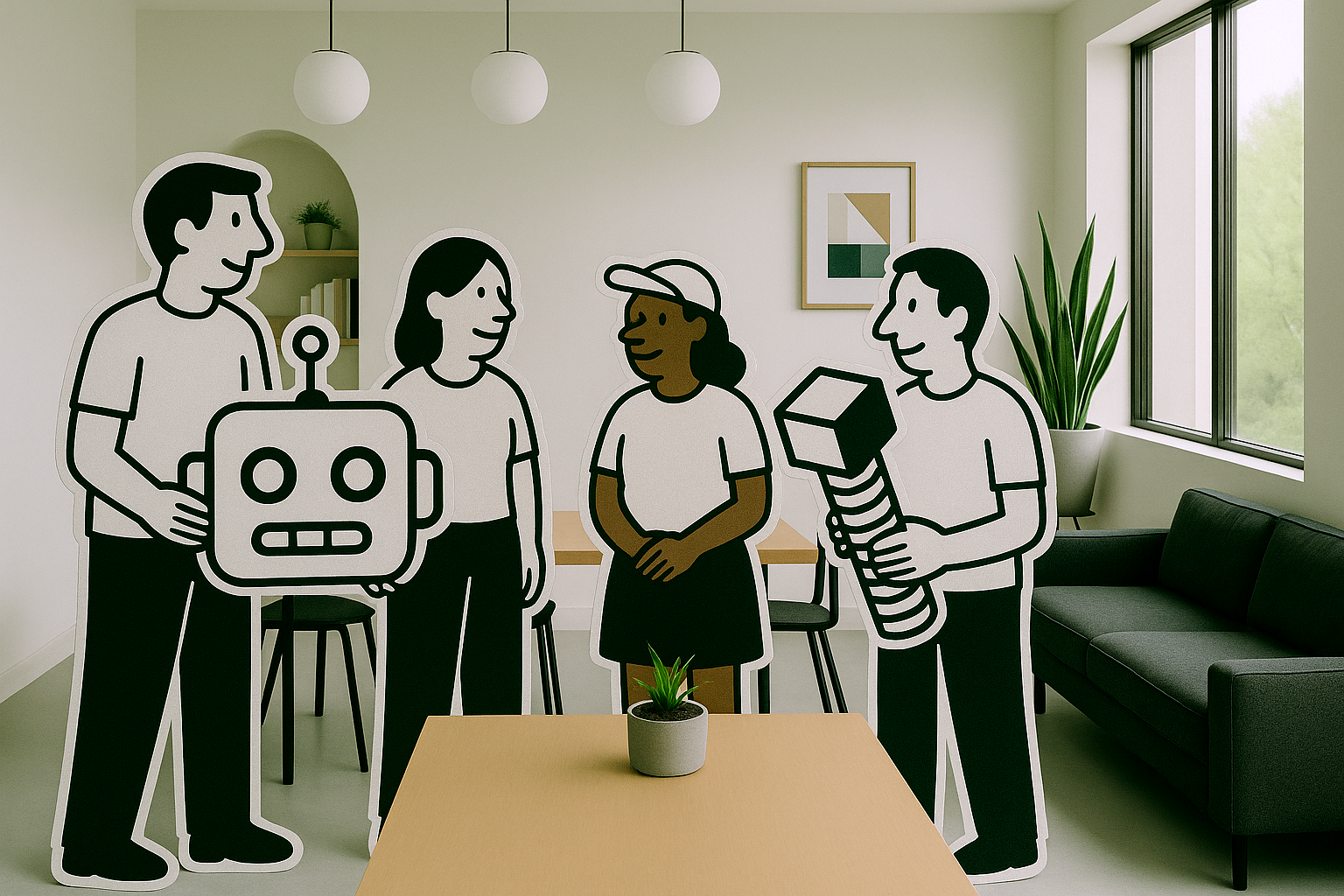
Mid-Year Reality Check
Walk into any high-performing coworking space today, and chances are, automation is running quietly in the background. What was once a forward-looking prediction has rapidly become foundational.
In an industry known for lean teams and hands-on service, AI-powered tools are now reclaiming entire workdays each week, streamlining admin, sharpening sales funnels, and giving staff space to do what tech can’t: build relationships.
⚙️ Automation: Coworking's New Efficiency Engine
What began as simple streamlining has become structural. Across the coworking sector, automation is quietly transforming how work gets done. From invoicing to lead conversion, the numbers speak for themselves:
| Tool | Documented Impact | Source |
|---|---|---|
| Nexudus | Up to 40% less time spent on invoicing; Square Works reports ~18 hours/week saved using AI helpdesk and delivery log automation. | Square Works Case Study |
| Spacebring | Saves 15–20 hours/week by automating bookings and invoicing, according to internal product documentation. | Spacebring Blog |
| Optix | Q Space implemented 25+ automations, resulting in over 1,300 automated actions in 4 months, significantly streamlining operations. | Q Space Case Study |
| OfficeRnD | Firmspace scaled operations significantly with contract, billing, and analytics automation. Time savings not quantified. | Firmspace Case Study |
| Archie | Claims up to 30% savings in staff time via automated onboarding, access, and billing. Built-in dashboards support lean operations. | Archie Product Page |
| KOHO.AI | Patch achieved an 81% reduction in reporting time and a 19% increase in unit occupancy by unifying data and using real-time analytics. | Patch Case Study |
| Uniti AI | Users report 20–30% more qualified leads and faster deal cycles with 24/7 AI sales agents handling prospecting and scheduling. | Uniti AI Website |
These aren’t abstract gains, they’re tactical wins that directly impact overhead, occupancy, and growth.
🧠 Automation Adoption: Leadership Lagging Behind
While nearly all companies are investing in AI, only 1% have fully integrated it into their workflows, according to McKinsey's 2025 report. This indicates that, despite widespread investment, few organizations have achieved maturity in AI deployment.
Interestingly, the primary barrier to scaling AI isn't employee resistance but leadership inertia. Employees are generally ready to embrace AI tools, but leaders are not steering fast enough to fully harness AI's potential.
This suggests that empowering employees and accelerating leadership engagement are critical steps toward effective AI integration.
🕵️ The Rise of Shadow AI
The urgency is real: Ivanti’s 2025 UK study reveals that 29% of workers are secretly using generative AI on the job, often without oversight, policy, or training. This isn’t just a tech issue; it’s a leadership gap. Operators who set clear guidelines and equip their teams will win both in productivity and in trust.
🟢 Trend Confirmed & Accelerating
Automation has moved to the centre of operations. For coworking teams, AI is unlocking scale, reducing overhead, and allowing staff to focus where it matters most: the member experience. In a margin-aware market, that focus is a clear advantage.
📖 Further Reading
Superagency in the workplace: Empowering people to unlock AI’s full potential
The Times: Nearly a third of UK workers secretly use AI, research finds
🟢 4. Sustainability, From Branding Pillar to Business Backbone
January Forecast
Sustainability would move beyond greenwashing and become a mandatory operating principle for coworking spaces.

Mid-Year Reality Check
Across the coworking sector, sustainability has become a structural concern. It’s showing up not just in long-term commitments, but in everyday decisions, from how energy is used to the partnerships operators form. According to the 2025 ESG Playbook for Coworking by technologywithin, 47% of operators now have a formal ESG policy, while 22% are developing one (p. 6).
♻️ Implementation First, Policy Second
97% of operators report that they’ve already introduced ESG-related actions (p. 31). Common efforts include reducing waste (81%), using energy-efficient systems (69%), and integrating renewable energy sources (59%). In many cases, initiatives are being implemented ahead of codified frameworks, evidence of a shift that’s being led by practice, not paperwork.
📈 ESG Is Part of the Conversation
Environmental, social, and governance considerations are now influencing how spaces are marketed and chosen. The report notes that 27% of operators are seeing up to 80% of prospective clients ask about ESG credentials before signing (p. 9). At the same time, 47% are experiencing pressure from investors to improve transparency.
💸 Shared Models Are Emerging
As ESG-related costs rise, expectations around who should cover them are changing. Only 20% of operators believe these costs should fall on, them alone. A larger share, 63%, now see co-investment with landlords as a more viable model (p. 10), particularly within management agreements and flexible lease structures.
⚠️ Challenges Remain
The barriers to progress are familiar:
– 64% cite budget limitations
– 46% say they lack in-house expertise
– 42% find it difficult to measure ESG-related return (p. 10)
Despite these issues, many operators are making headway with peer-led initiatives, shared frameworks; and third-party guidance.
🏅 Recognition Is Increasing
46% of operators have now secured formal ESG certifications, including BREEAM, WELL, Planet Mark, and B Corp (p. 11). Community-driven initiatives are also part of the picture; 75% run charitable programmes, 71% support local businesses, and 57% provide free events or public programming (p. 31).
🟢 Trend Confirmed: ESG as Standard
Sustainability is no longer treated as a side initiative. It’s part of how coworking spaces are funded, built, and operated, and it’s increasingly informing what clients expect.
📖 Further Reading
ESG in Flex Report by Technologywithin
🟢 5. Culture as Competitive Advantage -
Wellness, Belonging, and the New Workplace Standard
January Forecast
Coworking spaces would transition from productivity hubs to community sanctuaries, prioritizing not just work, but well-being, inclusivity, and human connection.

Mid-Year Reality Check
Culture is increasingly shaping how coworking spaces are evaluated, not by amenities alone, but by how well they foster trust, identity, and day-to-day belonging. In 2025, experience design carries more weight than design statements. Members are looking beyond Wi-Fi speeds and coffee bars to find workplaces that feel considered, inclusive, and human.
🧘 Well-being as Daily Practice
Deloitte’s 2025 Global Human Capital Trends report notes a clear link between well-being and performance. Companies that embed flexibility, time off, and continuous learning into their operations are seeing stronger engagement and better retention outcomes. For coworking spaces, this is translating into more considered design rhythms, spaces that support quiet focus, movement, recovery, and time away from screens.
♿ Designing for Access and Retention
Inclusive environments are no longer exceptional. According to Gensler’s 2025 Global Workplace Survey, employees working in inclusive settings are three times more likely to stay with their employer and feel their contributions are valued. The fundamentals, step-free access, gender-neutral facilities, and spaces for reflection are becoming part of the baseline. Spaces that overlook these are not simply behind, they’re misaligned with member expectations.
⚠️ A Growing Disconnect
Despite rising investment in employee experience, Gallup’s 2025 State of the Global Workplace reports that only 21% of workers believe their employer genuinely cares about their overall well-being, a historic low. The challenge is not awareness, but delivery. For coworking teams, it points to a need for more consistent, visible care: flexible scheduling, inclusive programming, and routines that support rather than overwhelm.
🤝 Belonging Shapes Behaviour
Workplace decisions are becoming more values-driven. Members increasingly choose where to work based on who they’ll be surrounded by. Coworking spaces that offer shared rituals, thoughtful programming, and space for informal connection are attracting professionals looking for more than a desk. Belonging is influencing not only how spaces are used, but also why people stay.
🟢 Trend Confirmed: Culture as Operating System
Culture has become a functional layer in coworking, part of how spaces retain members, differentiate themselves, and build long-term value. It is no longer handled by intuition or left to chance. Operators who invest in structure, consistency, and care are setting a different standard, quietly, but decisively.
📖 Further Reading
Deloitte: Reclaiming organizational capacity
Gensler: Global Workplace Survey
Gallup's 2025 State of the Global Workplace
🟢 6. Personalization Becomes Profit Strategy
January Forecast
The one-size-fits-all model would become obsolete replaced by AI-driven, hospitality-grade personalization that powers loyalty and revenue.
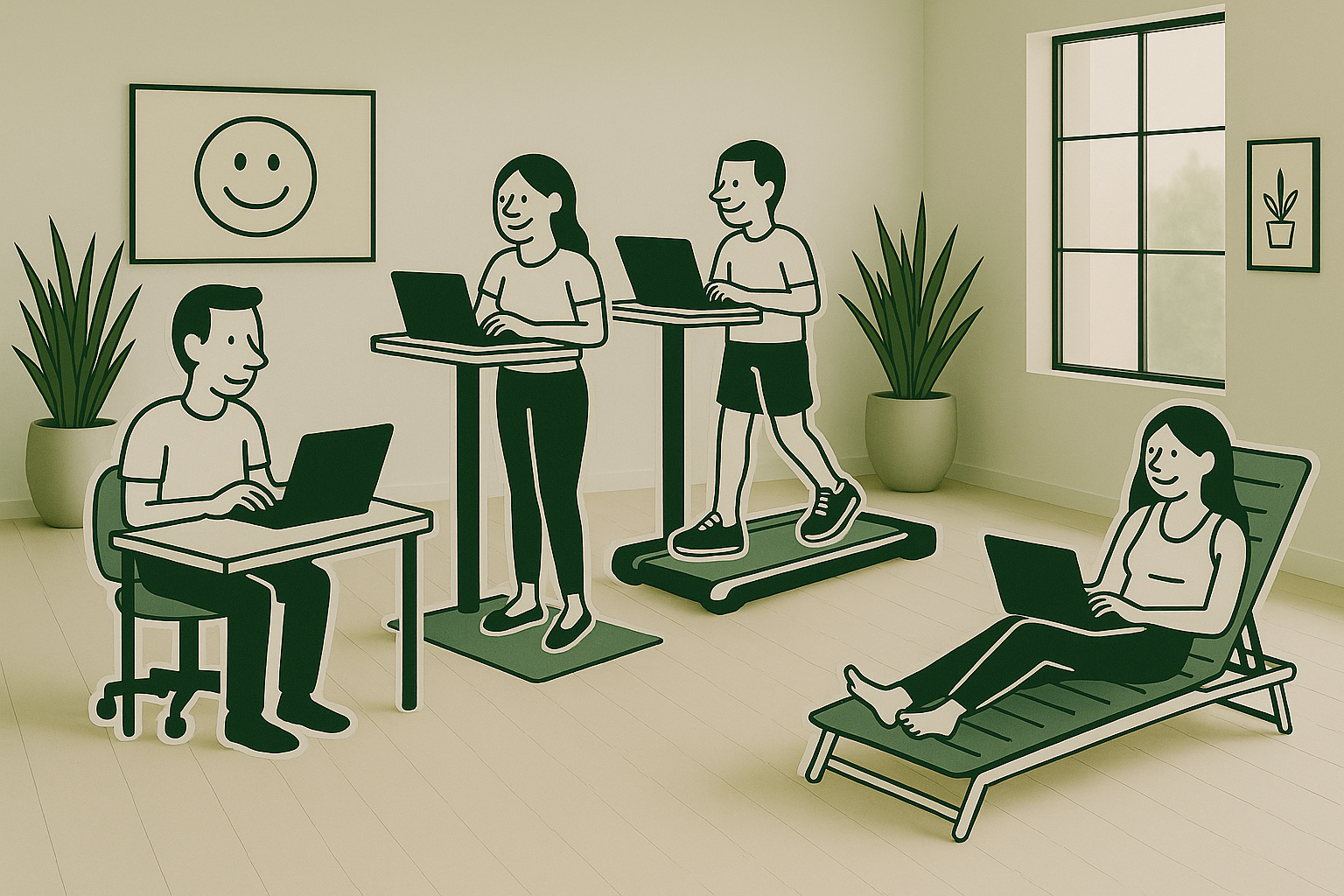
Mid-Year Reality Check
Personalization has become a defining feature of how leading coworking brands operate. In 2025, it’s not treated as a layer on top of the member experience, it’s built into the system. From onboarding to pricing, operators are working with real-time data to deliver experiences that feel considered and relevant.
🤖 From System Support to Member Interaction
McKinsey’s 2025 Global AI Survey notes that 78% of companies have implemented AI in at least one mission-critical function. In coworking, this is shifting how teams interact with members. AI is no longer reserved for operations in the background; it’s increasingly involved in shaping how services are delivered, questions are answered, and spaces are managed.
💰 Pricing That Reflects Use
Dynamic pricing is becoming standard in flex space operations. According to Flexspace AI’s 2025 report, operators using AI-driven pricing models are seeing revenue uplifts of over 50%, with 74% of total growth linked directly to rate adjustments made in response to user behaviour. The goal isn’t to increase fees arbitrarily, but to better align value with demand.
🧩 Experiences That Adjust in Real Time
Personalization today is informed by data, not just by staff familiarity. From adaptive onboarding to curated programming suggestions, AI is helping teams fine-tune their offering to match how members actually work. The results are tangible: stronger engagement, improved retention, and more consistent referrals.
In a crowded market, personalization is the new hospitality and the ultimate differentiator.
🟢 Trend Confirmed: Personalization as Standard
What began as experimentation has become expected. Personalization now informs how spaces are priced, programmed, and managed, and it’s playing a central role in building trust. For coworking brands looking to grow in 2025, it’s not just a tool. It’s part of the infrastructure.
📖 Further Reading
McKinsey, 2025: The State of AI
Flexspace AI: Transforming revenue and booking behavior
🟢 7. Community Building in a Fragmented World - Belonging as Business Infrastructure
January Forecast
Coworking spaces would move beyond networking events and Friday socials to position community as their core value proposition, anchoring remote teams, fostering collaboration, and mitigating workplace isolation.

Mid-Year Reality Check
In 2025, community has become a central element of workplace strategy. As hybrid work routines stretch across time zones and touchpoints, coworking spaces are stepping in to offer more than desks, they’re creating social infrastructure. Belonging, once considered an intangible, is now tied directly to retention, engagement, and organisational health.
According to the Center for Creative Leadership (CCL), employees with a strong sense of belonging are:
– 3.5× more likely to contribute fully at work
– 5× more likely to remain with their organisation
– Significantly more likely to collaborate and recover from challenges
These outcomes are being reflected in how operators design their experience and measure their value.
🧭 Culture and Behaviour Are Closely Linked
Community doesn’t happen by chance. HRZone notes that strong internal communities support higher motivation, better peer accountability, and deeper day-to-day engagement, especially when paired with psychological safety and clear values. Rituals, shared language, and consistent interaction play a central role.
🏛️ Programming That Starts with Purpose
Leading coworking spaces are moving beyond ad hoc events. Community programming is being structured intentionally, supporting creative work, shared learning, and peer exchange. Dedicated zones for rituals, resource-sharing, and social interaction are becoming common features, built directly into the floor plan and rhythm of the space.
📲 Digital Layers, Human Outcomes
With distributed teams and multi-location operators on the rise, the digital side of community is getting more attention. Platforms that support check-ins, shared interests, and event discovery are being used to reinforce offline connections rather than replace them. Digital tools are becoming part of the member experience, not just back-end systems.
🎯 Smaller Communities, Deeper Loyalty
Rather than appealing to everyone, many coworking brands are refining their focus, building micro-communities around shared practices, missions, or disciplines. Whether centred on sustainability, design, wellness, or local impact, these smaller circles are helping members build meaningful relationships—and giving them a reason to stay.
🟢 Trend Confirmed: Community as Operating Framework
In a time of shifting routines and uncertain loyalty, community is proving to be one of the clearest differentiators in the coworking sector. It’s not a perk or an afterthought, it’s becoming a system. And in 2025, it’s what sets resilient operators apart.
📖 Further Reading
Create Better Culture, Build Belonging at Work – CCL
Building Caring Communities at Work – HRZone
🟢 8. The Commercial Real Estate (CRE) Influence, Coworking as a Strategic Asset
January Forecast
Coworking would become a key pillar of commercial real estate (CRE) strategies, offering landlords a flexible, revenue-generating alternative in the face of growing vacancies.
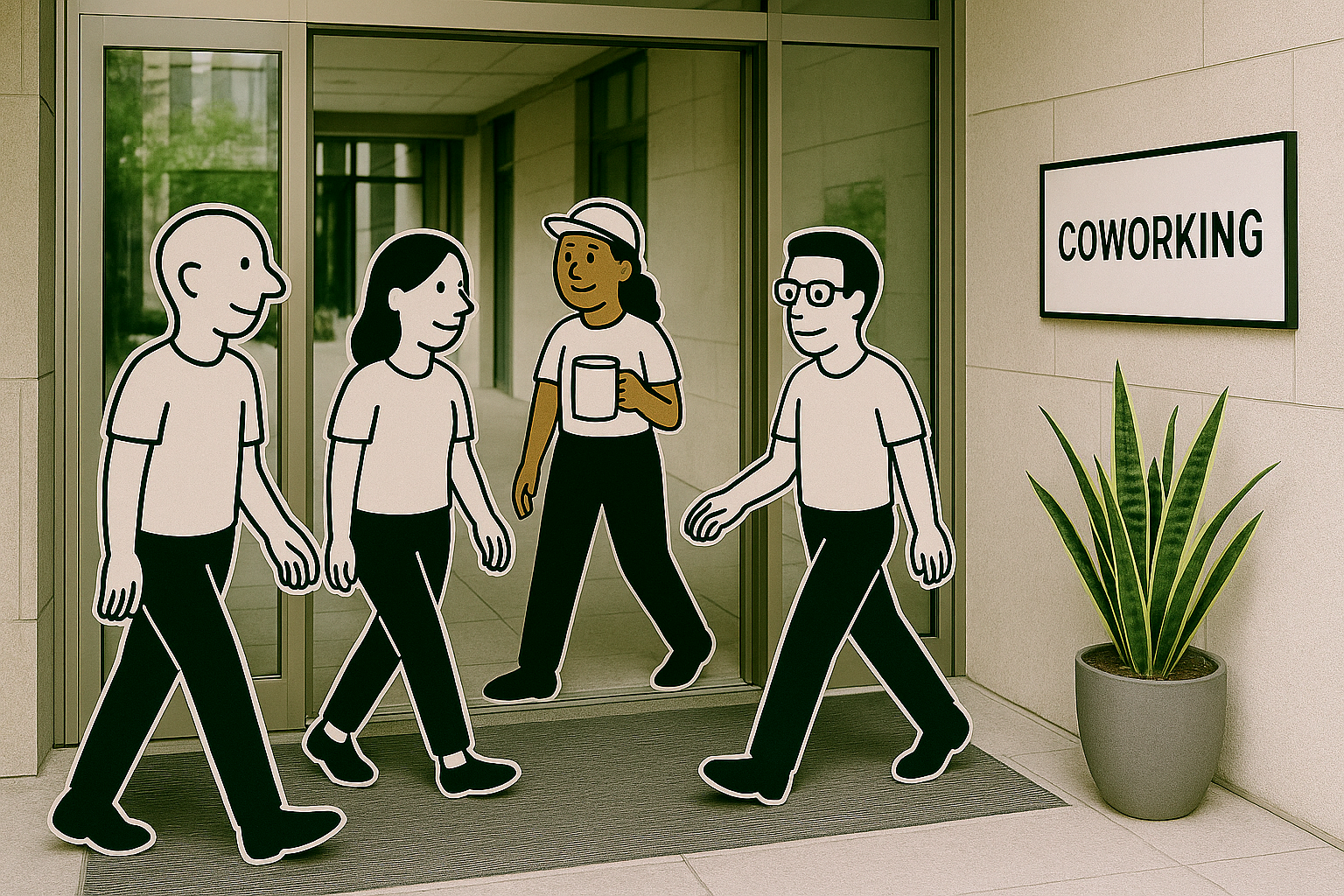
🟢 Mid-Year Reality Check
The relationship between coworking and commercial real estate has shifted noticeably. Once seen as a niche solution, flex workspace is now being built into long-term asset strategies, particularly in mature urban markets.
According to the UK Flex Office Market 2025 report by Spaces to Places:
– Flex accounts for 10% of all London office space, up from 6% in 2019
– 52 major serviced office brands now operate across 1,230 locations, with Regus alone holding a 16% share
– Management agreements make up 16% of market transactions, signalling a growing preference among landlords to retain control while outsourcing operations
– Several landlords, including British Land (Storey) and Landsec (Myo), have launched proprietary coworking brands
The sector is beginning to resemble other maturing asset classes, such as student housing and hospitality, both of which evolved through similar brand-led and hybrid management models.
🟢 Trend Confirmed - Coworking as Infrastructure
Coworking is now part of the structural landscape of commercial property. For landlords adapting to decentralised teams and shifting lease expectations, flexible workspace offers more than short-term relief. It’s emerging as a primary channel for tenant engagement, asset activation, and long-term portfolio strategy.
📖 Further Reading
UK Flex Office Market 2025 Q1 – Spaces to Places
- [Landlord Flex Strategies: Page 16–18, PDF]
- [Market Composition & Growth Insights: Page 2–11, PDF]
- [Rise of Management Agreements: Page 18, PDF]
🟢 Looking Ahead

As we pass the midpoint of 2025, coworking has moved firmly into the mainstream of workplace and real estate strategy. No longer an edge-case or interim solution, it now draws from a broader vocabulary—hospitality, architecture, systems thinking—to meet the demands of a more fluid and distributed world of work.
Flexibility, once a stopgap during disruption, has matured into a principle of design. It sits at the intersection of operational clarity and cultural care. For operators, the focus is shifting from expansion to refinement—moving with purpose, not just pace.
Here are five areas worth close attention over the coming months:
✳️ Calibrate the Hybrid Week
Occupancy trends across Europe suggest a stable rhythm of two to three days per week in-office. Rather than aiming for constant availability, operators are seeing better outcomes by aligning programming, staffing, and events with peak usage days.
✳️ Use Automation to Support, Not Substitute
Automation continues to deliver measurable efficiencies, some operators are saving up to 20 hours per week through back-office tools. But the value lies in where that time is reallocated. Technology should enable more meaningful member engagement, not dilute it.
✳️ Position ESG and Well-being as Structural Priorities
47% of operators now have a formal ESG policy in place, and demand from both members and investors is rising. The most effective responses aren’t surface-level; they’re baked into how spaces are designed and managed. That includes materials, energy systems, and space planning that support balance and restoration.
✳️ Build Community as Infrastructure
Programming is becoming more intentional. There’s a general move away from one-off events toward sustained systems of belonging, peer rituals, feedback loops, and quiet signals that reinforce trust.
✳️ Engage Landlords Through Shared Strategy
With flex now accounting for 10% of London’s office market, landlords are becoming active participants in workspace innovation. Whether through brand partnerships, management agreements, or in-house ventures, collaboration models are maturing.
The second half of 2025 is less about bold pivots and more about subtle recalibrations. For those running or designing coworking spaces, it’s an opportunity to step back, refine systems, and lead with quiet coherence.
If you're aligning your next chapter, TwoFifty, our coworking consultancy services, works alongside operators, landlords, and design teams to shape workspaces that last, strategically, operationally, and culturally.
Book a conversation to explore how we can support what you’re building.
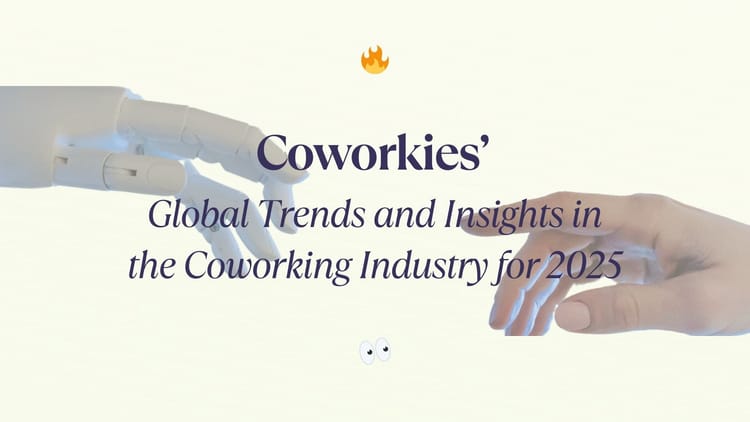
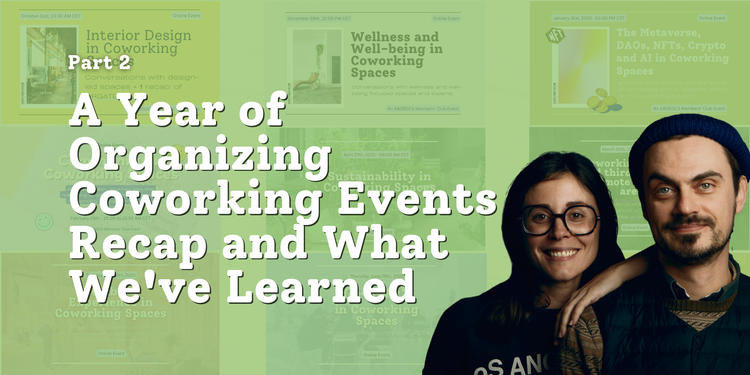
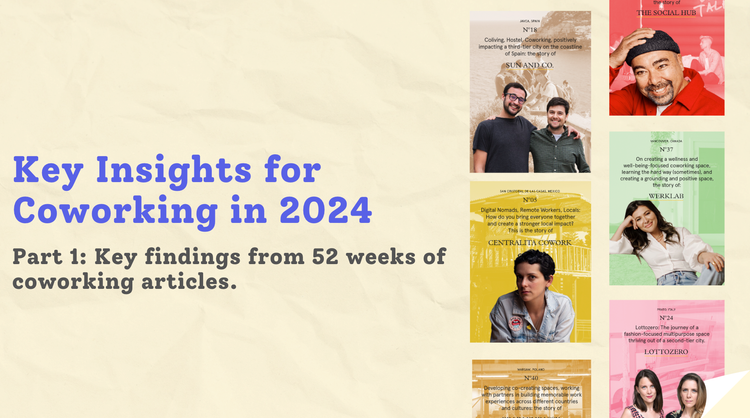
Member discussion